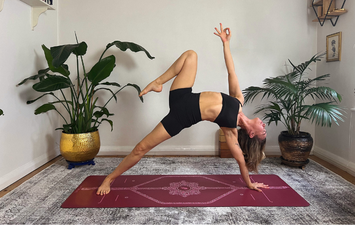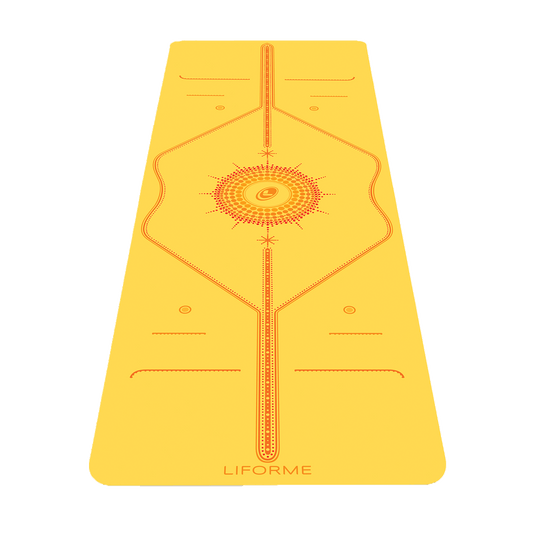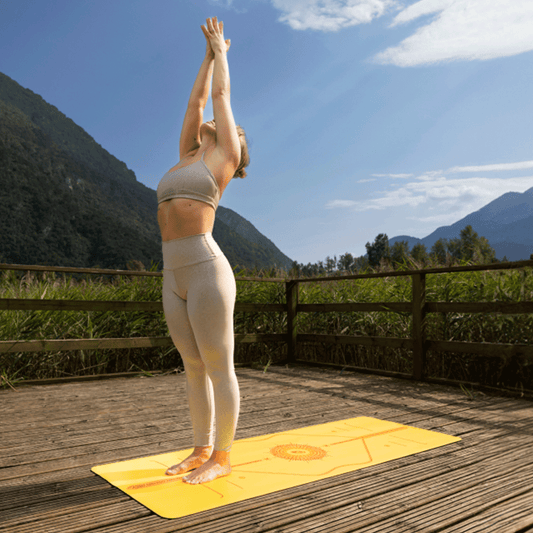Bow Pose relies on the traction between two parts of the body moving in opposite directions to create a heart-opening back-bend. With your hands clasped around your ankles and your legs pulling you back, you may find access to a more expansive opening of the chest. Because you’re rising up from the floor, Bow Pose strengthens the back muscles as well as improving spinal flexibility. Bow also offers the opportunity to backbend without putting a lot of pressure on the wrists and shoulders.
Benefits of Bow Pose
Strengthens the back and glutes
Stretches the chest, shoulders, and quads
Instructions
1. Begin by lying down on your mat flat on your stomach with your arms by your sides. Bring either your forehead or your chin to the mat.
2. Bend both legs at the knees and bring your heels toward your butt.
3. Reach your hands back to catch hold of your ankles or the tops of your feet. (Right hand to right foot, left hand to left foot.) Take your grip from the outside of each foot. If you can’t quite reach, try looping a strap around the front side of both ankles. Then hold one end of the strap in each hand as close to your ankles as possible.
4. Roll your shoulders back and hug your shoulder blades together toward the midline of your back.
5. Activate your feet by either strongly flexing them, pointing them, or flaring your toes.
6. On an inhalation of breath, press your shins toward the back of the room to lift your chest and thighs off the floor. Hug your knees toward the midline so they stay in line with your hips throughout the pose. Some traditions say to lift on an exhalation of breath, others on an inhalation. Try it both ways and see how the differ.
7. As your legs move back, your grip on the ankles allows your chest to rise and open.
8. Once you come up, continue to move your shoulders away from your ears, anchor your tailbone toward the floor, and knit your low ribs together.
9. Keep your neck as neutral as possible, which probably means that your gaze will fall on the floor in front of you or maybe to the front of the room. Cranking your neck up to look at the ceiling does not create a deeper backbend.
10. Your abdomen is your primary contact with the floor, which constricts your breath slightly.
11. Take several breaths. You’ll probably notice that your chest rises higher on your inhalations.
12. Release on an exhalation.

Advanced Variations
There are many more advanced variations on Bow that take the backbend deeper. As you become more flexible, you may be able to lift your thighs higher. You can also flip your grip on your feet so that your hands come over the tops of your feet with your elbows pointing toward the ceiling for a strong shoulder stretch.




































